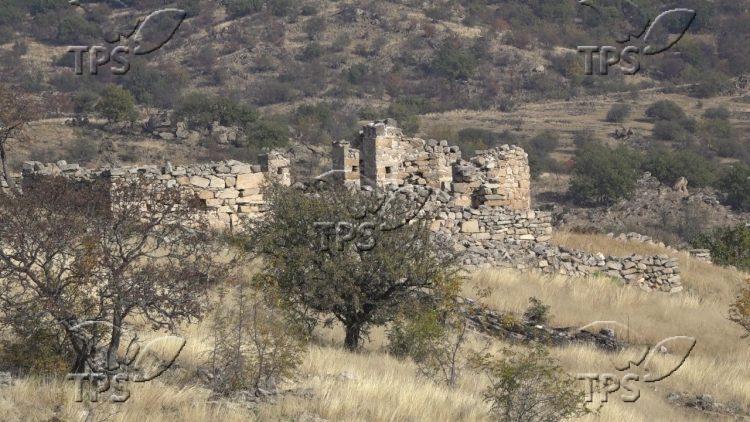Mariovo’s Undiscovered Secret
Jerusalem, 21 December, 2020 (TPS-IL) -- Prilep, 21 December 2020 (MIA) – When you are headed to Mariovo from Prilep, right before Rasimbeg Bridge on Crna Reka, you need to turn left and walk in order to reach Gradok, one of the most important archeological sites in Mariovo, because it has artifacts for the antique era, the middle ages, and most importantly, for the beginnings of Christianity.
A fascinating view will greet you. Basilica walls from the Byzantine antique period turned into a monastery complex, and the preservation of the remnants is fascinating. These walls have existed for nearly 2,000 years, from the 4th century AD.
The story of Gradok in Mariovo isn’t new, but new research is fascinating. The research was conducted by the end of the 20th century, from 1989 until 1996, and now, 24 years later. It is believed that artifacts from the early antique era and early Christianity can be traced back to as early as the 4th century AD.
Archaeologist Branko Risteski, head of the Institute of Slavonic Culture in Prilep, who leads the excavation team, is eager to tell the story of the early antique period 2,000 years ago on this very soil, as well as the beginnings of Christianity. It was known until now that the site has had its beginning in the late antique period, but now its new antique period era has been uncovered since the beginning of the new era. The antique period melts into the early middle ages, Risteski says.
“24 years ago, we found remnants of an antique settlement, key to Mariovo’s cultural history. In the period from the 9th-14th century, a medieval monastery with two churches was found. Those two stages were researched in-depth, even though prehistoric and early ancient period remnants were found. The biggest part of the remnants was linked to these two stages – the antique settlement and the medieval period with the monastery and two churches. This year, for the first time, we’ve had the possibility to explore an important complex of early antique settlements, a new thing in the research done so far that offered details about the late antique period. This deepens our knowledge of the antique settlement. The other line is the new information about the medieval monastery. We found parts of luxuriously glazed ceramic pots linked to Thessaloniki luxurious shops in the Byzantine period,” Risteski explains.
The discoveries about the relation to the south, i.e. the Thessaloniki center, point to the fact that Gradok was a key point in the south-north transfer.
“The production, as the southernmost point in Manastir, Mariovo, is connected to medieval Prilep, then Skopje, then following the Danube. It’s a massive luxurious production, and this point has an important place in this chain,” Risteski says.
The most important thing is that the 4th-century Byzantine basilicas are considered the beginning of early Christianity. Based on them, a monastery complex sprouted on the Treskavec range afterwards.
“The early antique in this area has been witnessed since 1 c AD, with crucial remodelling from the 4th to 6th c AD. It’s important to say that, in the late antique period, which is 4-6 c AD, manifestations of Christianity are noted. This monastery has been operational since the 10th century all the way to the early 15th century. With testimonials about the basilica, it’s associated with a religious point in the 5th and 6th centuries. It’s connected to the Holy Transfiguration sacral complex in Zrze, and the complex in Gradeshnica where there is knowledge about remodelling a late-antique residential mansion in a Christian complex. For these beginnings of Christianity in Mariovo and north Pelagonija, one of the key points is here at the village of Manastir, Mariovo. Maybe this is the explanation for the significant religious point from the 9th to the 14th century. Why did monastery life end in the 14th and 15th centuries? Probably due to the rise of the Ottoman Empire,” RIsteski believes.
This information completes the knowledge of the planimetry of the antique settlement and the spatial organization of the medieval monastery, located right over one of the knot communication points in this part of Mariovo.
This year’s Gradok research will mean a 3D modelling of the acropolis of the settlement, a space in which the biggest part of the previously researched buildings is located, as well as buildings that were preserved on the settlement’s surface. There will be an additional topographic recording of the visible part of the fortification. By putting the results together from both recordings, a precise 3D model will be produced. The goal is to make the virtual spatial environment consistent with reality. The garnered data which will be georeferenced according to the Macedonian coordinative system, a secure basis will be set up to precisely locate and map all future research.
According to archeologists, Gradok is a key point to break main communication links in the south and north of the Balkans. There are ideas to build a settlement around Gradok, if the Chebren dam is built in Mariovo.
Today, the most displaced area in Europe hides secrets, or slowly reveals them, of a civilization that existed almost 2000 years ago, a significant key point that connected the north and south of the Balkans.
2020-12-21 09:38:17, from Bisera Altiparmakova


